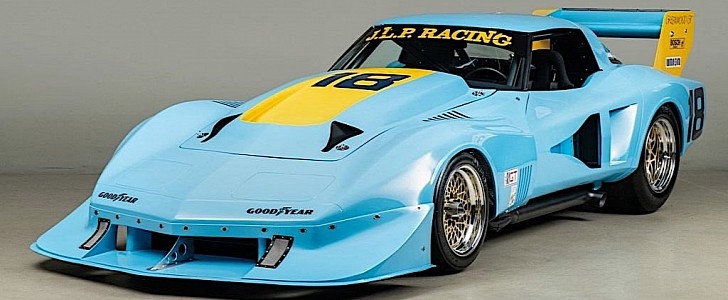IMSA racers are by definition incredible machines. Built for hardcore racing, they are capable of going fast down the track, can keep the drivers safe no matter how horrible a potential accident can be, and from time to time they become collectors' must-haves.
Ever since its creation in 1969, the International Motor Sports Association has been a driving force behind incredible engineering. Its rules and regulations allowed talented people in the industry to come up with unique and at times revolutionary hardware, fitted inside car shells (granted, modified) people are used to see on the roads.
One perfect example of the great engineering IMSA made possible over the years is this 1977 Chevrolet Corvette. Known as the SuperVette in racing circles, it is the work of Charlie Selix and Gary Pratt (chassis), Bob Riley (design), and Don Nichols (engine), in response to the regulation changes of 1976.
The vehicle is one of just two (COV002) tube-frame Corvette chassis built for IMSA. It comes with 2-inch chrome-moly tubing with extensive triangulation, and its body hides an aluminum big-block V8 capable of developing in excess of 750 horsepower and an estimated 800 lb-ft of torque.
These power levels earned the car the designation “most powerful and brutal racing Corvette ever designed.” At least that’s how a garage called Canepa calls it, as it looks for a new owner for the racer.
Despite the insane power levels and inspired engineering, the car did not make a splash in the IMSA events of its time. Driven by John Paul Sr. of JLP Racing, it scored 2 podiums and three top 5 finishes in 1978. Later, in the hands of John Greenwood, the SuperVette dropped out of the Daytona 24 Hours because of an engine failure.
Canepa says the car was completely restored to its 1978 spec, livery included, and it is now in concours-ready state. The selling price was not disclosed, but a quick inquiry to the seller should take care of that - as a side note, the car has been listed for sale for a while now.
One perfect example of the great engineering IMSA made possible over the years is this 1977 Chevrolet Corvette. Known as the SuperVette in racing circles, it is the work of Charlie Selix and Gary Pratt (chassis), Bob Riley (design), and Don Nichols (engine), in response to the regulation changes of 1976.
The vehicle is one of just two (COV002) tube-frame Corvette chassis built for IMSA. It comes with 2-inch chrome-moly tubing with extensive triangulation, and its body hides an aluminum big-block V8 capable of developing in excess of 750 horsepower and an estimated 800 lb-ft of torque.
These power levels earned the car the designation “most powerful and brutal racing Corvette ever designed.” At least that’s how a garage called Canepa calls it, as it looks for a new owner for the racer.
Despite the insane power levels and inspired engineering, the car did not make a splash in the IMSA events of its time. Driven by John Paul Sr. of JLP Racing, it scored 2 podiums and three top 5 finishes in 1978. Later, in the hands of John Greenwood, the SuperVette dropped out of the Daytona 24 Hours because of an engine failure.
Canepa says the car was completely restored to its 1978 spec, livery included, and it is now in concours-ready state. The selling price was not disclosed, but a quick inquiry to the seller should take care of that - as a side note, the car has been listed for sale for a while now.
































